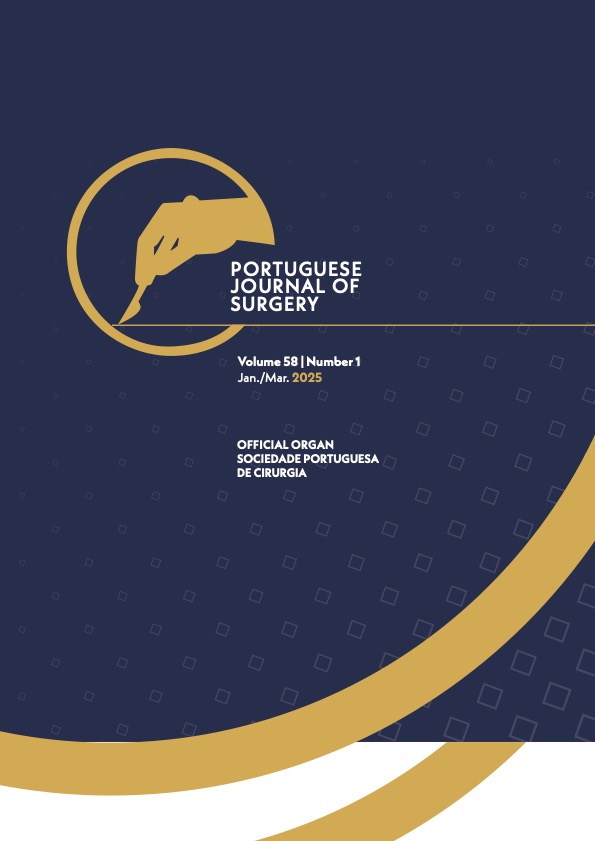Espessamento Omental
DOI:
https://doi.org/10.34635/rpc.1028Keywords:
Peritoneal Neoplasms, OmentumAbstract
A 60-year-old man was admitted to the emergency department with diffuse abdominal discomfort, associated with hematochezia and changes in intestinal rhythm. He underwent abdominal computed tomography (CT), which demonstrated moderate ascites with diffuse thickening of the transverse mesocolon (Fig. 1). He underwent surgery which revealed: “omental thickening” (Figs. 2 e 3). Omental thickening or caking is an important finding to indicate peritoneal pathology and should trigger an alarm when present with no attributable primary cause. CT scan, significant omental thickening with a large peritoneal mass and numerous implants were observed, in addition to extensive ascites. The most common solid masses that affect the mesentery are metastases and lymphoma, which are much more common than primary tumors. Metastases resulting from direct extension are most commonly those of pancreatic and gastric origin. In contrast, peritoneal and omental metastases (“carcinomatosis”) most commonly arise from ovarian, gastric, colorectal, and pancreatic cancers and is often accompanied by the development of malignant ascites. The histopathological examination demonstrated a larger omentum with an external surface with a lobulated appearance, yellowish-brown in color and an elastic-firm consistency. When cut, the surface has a grainy, yellowish appearance, with poorly defined and diffuse whitish areas. The immunohistochemical examination was conclusive for peritoneal infiltration of adenocarcinoma of colorectal origin (Fig. 4).Downloads
References
Cornman-Homonoff, Joshua and David C. Madoff. “Image-guided Biopsy of Mesenteric, Omental, and Peritoneal Disease.” Digestive Disease Interventions 02 (2018): 106 - 115.
Downloads
Published
Issue
Section
License
Copyright (c) 2022 Portuguese Journal of Surgery

This work is licensed under a Creative Commons Attribution-NonCommercial-NoDerivatives 4.0 International License.
Para permitir ao editor a disseminação do trabalho do(s) autor(es) na sua máxima extensão, o(s) autor(es) deverá(ão) assinar uma Declaração de Cedência dos Direitos de Propriedade (Copyright). O acordo de transferência, (Transfer Agreement), transfere a propriedade do artigo do(s) autor(es) para a Sociedade Portuguesa de Cirurgia.
Se o artigo contiver extractos (incluindo ilustrações) de, ou for baseado no todo ou em parte em outros trabalhos com copyright (incluindo, para evitar dúvidas, material de fontes online ou de intranet), o(s) autor(es) tem(êm) de obter, dos proprietários dos respectivos copyrights, autorização escrita para reprodução desses extractos do(s) artigo(s) em todos os territórios e edições e em todos os meios de expressão e línguas. Todas os formulários de autorização devem ser fornecidos aos editores quando da entrega do artigo.



